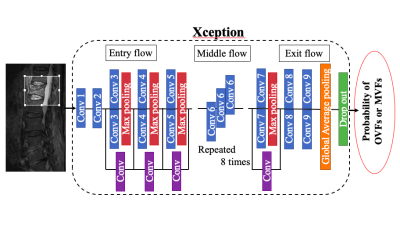Takafumi Yoda1, Satoshi Maki2, Koji Matsumoto1, Hajime Yokota3, Yoshitada Masuda1, and Takashi Uno3
1Department of Radiology, Chiba University Hospital, Chiba, Japan, 2Department of Orthopedic Surgery, Graduate School of Medicine, Chiba University, Chiba, Japan, 3Diagnostic Radiology and Radiation Oncology, Graduate School of Medicine, Chiba University, Chiba, Japan
1Department of Radiology, Chiba University Hospital, Chiba, Japan, 2Department of Orthopedic Surgery, Graduate School of Medicine, Chiba University, Chiba, Japan, 3Diagnostic Radiology and Radiation Oncology, Graduate School of Medicine, Chiba University, Chiba, Japan
The ability of CNNs to distinguish osteoporotic vertebral fractures and malignant vertebral compression fractures using MRI was comparable or superior to that of the spine surgeons. Our models could be a useful tool for the differential diagnosis of OVF and MVF.

Figure 1. The deep learning framework Tensorflow was used to construct the CNN architecture. In the present work, we used the Xception architectural model, which had been already trained using images with ImageNet.